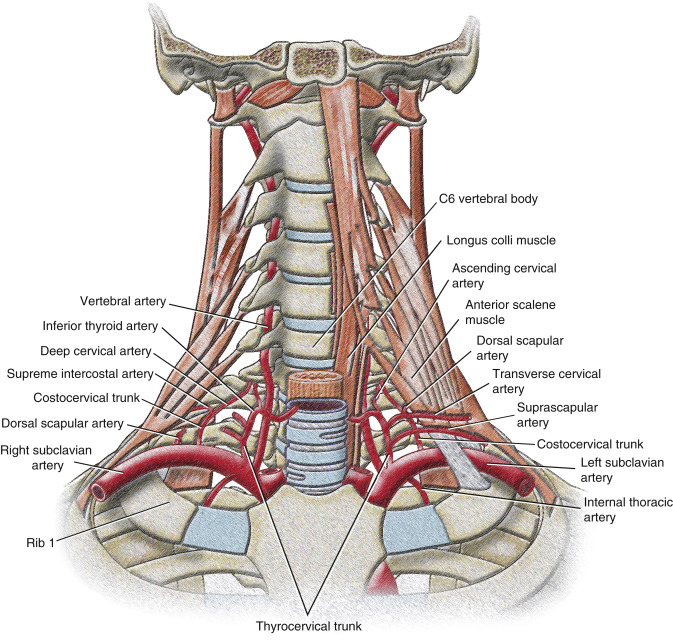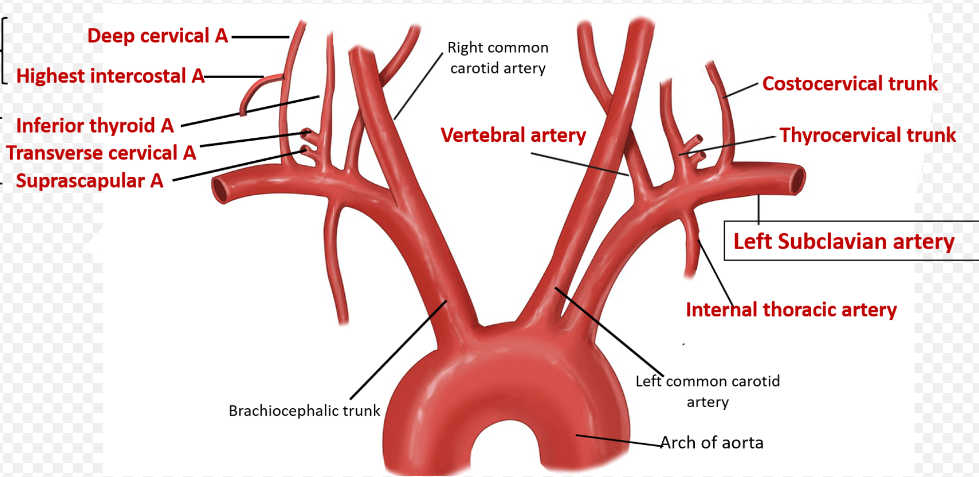Makindo Medical Notes"One small step for man, one large step for Makindo" |
|
|---|---|
| Download all this content in the Apps now Android App and Apple iPhone/Pad App | |
| MEDICAL DISCLAIMER: The contents are under continuing development and improvements and despite all efforts may contain errors of omission or fact. This is not to be used for the assessment, diagnosis, or management of patients. It should not be regarded as medical advice by healthcare workers or laypeople. It is for educational purposes only. Please adhere to your local protocols. Use the BNF for drug information. If you are unwell please seek urgent healthcare advice. If you do not accept this then please do not use the website. Makindo Ltd. |
The Subclavian Artery
-
| About | Anaesthetics and Critical Care | Anatomy | Biochemistry | Cardiology | Clinical Cases | CompSci | Crib | Dermatology | Differentials | Drugs | ENT | Electrocardiogram | Embryology | Emergency Medicine | Endocrinology | Ethics | Foundation Doctors | Gastroenterology | General Information | General Practice | Genetics | Geriatric Medicine | Guidelines | Haematology | Hepatology | Immunology | Infectious Diseases | Infographic | Investigations | Lists | Microbiology | Miscellaneous | Nephrology | Neuroanatomy | Neurology | Nutrition | OSCE | Obstetrics Gynaecology | Oncology | Ophthalmology | Oral Medicine and Dentistry | Paediatrics | Palliative | Pathology | Pharmacology | Physiology | Procedures | Psychiatry | Radiology | Respiratory | Resuscitation | Rheumatology | Statistics and Research | Stroke | Surgery | Toxicology | Trauma and Orthopaedics | Twitter | Urology
Related Subjects: |The Coronary Arteries |The Axillary Artery |The Brachial Artery |The Carotid Artery |The Femoral Artery |The Popliteal artery |The Subclavian Artery |The Iliac Artery |The Brachial Artery |The Axillary Artery |The radial and Ulnar Artery
The subclavian artery is a major artery that supplies blood to the upper limbs, neck, and parts of the brain. There are two subclavian arteries: the right subclavian artery and the left subclavian artery, each arising from different origins but following similar courses to supply the corresponding sides of the body.

Anatomy of the Subclavian Artery
- Origin :
- The right subclavian artery arises from the brachiocephalic trunk.
- The left subclavian artery arises directly from the aortic arch.
- Course :
- Both arteries arch laterally and pass over the first rib, traveling between the anterior and middle scalene muscles.
- The subclavian artery transitions into the axillary artery at the lateral border of the first rib.
Branches of the Subclavian Artery
- Vertebral Artery :
- Course: Ascends through the transverse foramina of the cervical vertebrae.
- Function: Supplies blood to the spinal cord and brainstem, and contributes to the Circle of Willis.
- Internal Thoracic (Mammary) Artery :
- Course: Descends along the inner surface of the anterior thoracic wall.
- Function: Supplies blood to the anterior chest wall and breasts.
- Thyrocervical Trunk :
- Branches: Inferior thyroid artery, transverse cervical artery, and suprascapular artery.
- Function: Supplies blood to the thyroid gland, neck muscles, and scapular region.
- Costocervical Trunk :
- Branches: Deep cervical artery and superior intercostal artery.
- Function: Supplies blood to the deep muscles of the neck and the first two intercostal spaces.
- Dorsal Scapular Artery (variable):
- Course: Travels along the medial border of the scapula.
- Function: Supplies blood to the rhomboid muscles and the scapular region.

Functions of the Subclavian Artery
- Blood Supply to the Upper Limbs :
- The subclavian artery provides the primary blood supply to the upper limbs through its continuation as the axillary artery.
- Blood Supply to the Brain and Spinal Cord :
- The vertebral arteries, branches of the subclavian arteries, supply blood to the brainstem, spinal cord, and posterior part of the brain.
- Blood Supply to the Thoracic Region :
- The internal thoracic arteries supply blood to the anterior thoracic wall, breasts, and diaphragm.
- Blood Supply to the Neck and Scapular Regions :
- The thyrocervical and costocervical trunks, along with the dorsal scapular artery, supply blood to the thyroid gland, neck muscles, and scapular region.
Clinical Relevance
- Subclavian Steal Syndrome :
- Definition: A condition where blood flow is reversed in the vertebral artery due to a significant stenosis or occlusion of the subclavian artery proximal to the origin of the vertebral artery.
- Symptoms: Can include dizziness, vertigo, and upper limb ischaemia, especially during exercise.
- Diagnosis: Doppler ultrasound, CT angiography, or MRI angiography.
- Treatment: May involve angioplasty, stenting, or bypass surgery.
- Thoracic Outlet Syndrome :
- Definition: A condition caused by compression of the subclavian artery, vein, or brachial plexus as they pass through the thoracic outlet.
- Symptoms: Include pain, numbness, and weakness in the upper limb, and possible vascular symptoms like swelling and discoloration.
- Diagnosis: Physical examination, imaging studies, and nerve conduction tests.
- Treatment: Physical therapy, pain management, and in severe cases, surgical decompression.
- Aneurysms :
- Definition: Abnormal dilation of the subclavian artery that can lead to rupture if untreated.
- Symptoms: Often asymptomatic but can cause pain or ischaemia due to compression of adjacent structures or embolization.
- Diagnosis: Ultrasound, CT angiography, or MRI angiography.
- Treatment: Surgical repair or endovascular stenting.
Summary
The subclavian artery is a major vessel that supplies blood to the upper limbs, neck, brain, and thoracic region. It gives rise to several important branches, including the vertebral artery, internal thoracic artery, thyrocervical trunk, and costocervical trunk. Understanding the anatomy and function of the subclavian artery is essential for diagnosing and managing conditions such as subclavian steal syndrome, thoracic outlet syndrome, and aneurysms.